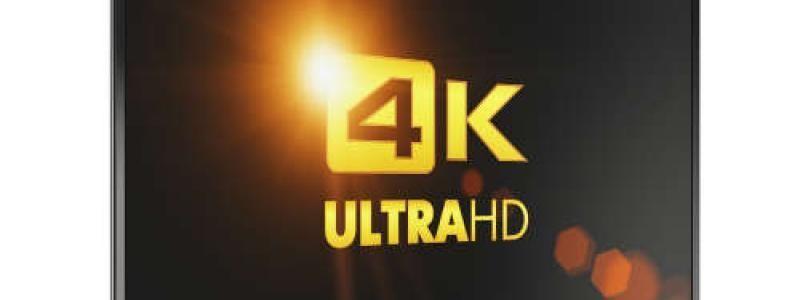Ultra HD Alliance Founded at CES

The Consumer Electronics Show in Las Vegas has been the birthplace of most of today's best-known technology, such as CDs, Blu-ray discs, HDTV, Microsoft Xbox and even the camcorder, and recently, at the 2015 CES, a groundbreaking new technology has emerged that will change the way consumers watch TV in their homes.
The Ultra HD Alliance was announced at this year's convention, and the names attached to the project include most of the best-known companies in digital entertainment, such as Technicolor, Dolby, Netflix, DirecTV, Samsung, Panasonic, Sharp, Sony, Disney, Fox and Warner Bros. They are gearing up to begin offering 4K UHD TV, which is a format that offers twice the resolution and color gamut as its predecessor, 2K UHD TV.
A Consistent Video Experience
A senior vice president of Technicolor said that the Alliance believes digital entertainment will be about much more than higher pixel resolution in the future. Consumers will want greater dynamic range and clarity and a wider color gamut, to name a few improved areas. Not only does UHD TV offer a long list of picture enhancements, but it pushes the envelope of HD sound quality as well by offering immersive 3-D audio, presumably developed by audio pioneer Dolby.
It was noted that the media company Deluxe was not listed as a founding member of the coalition despite the fact that Deluxe has created the technology on which UHD TV relies. The purpose of the coalition is to set an industry standard for UHD TV in the future and to ensure that device manufacturers and digital cable providers adhere to the outlined codes. It will only be a few months before the Alliance begins holding official meetings, an official spokesperson said.
Creating an Official Standard
The idea for bringing together an alliance of media companies to promote UHD TV came from consumers' general lack of enthusiasm for the 4K technology despite ample UHD offerings from TV makers, such as many members of the coalition, including Panasonic, Samsung, Sharp and Sony. Since there was no standard for delivering this technology, consumers didn't understand its benefits, and perhaps it didn't deliver a consistent experience from one device to another.
The UHD Alliance seeks to standardize the technology so that TV makers can label their products as being UHD-compliant in the future, although the standard isn't in effect yet. When the protocol becomes standard, consumers will be able to make decisions on which products to buy simply by reading the labels on the boxes of the products they purchase. By the time UHD TV becomes the standard format for home entertainment systems, most consumers will know what they're getting when they buy a UHD TV, just as most consumers know how the old analog cable TV sets work today.
Technical Details
When optic fiber data becomes standard, consumers can download content thousands of times more quickly than is possible today. For example, a season of a TV show that consists of eight 4GB discs would take at least three hours to download at 3 Mbps, which is the rate many consumers' cable providers offer. With fiber optic Internet, people could stream UHD TV seamlessly or download an entire series of 32GB of data in a few seconds. It will be a new frontier in digital cable, and it will require higher bandwidth to deliver the 4K UHD resolution along with the higher color gamut and immersive 3-D sound.
The Alliance hasn't released any data on how large these files are likely to be, but because 4K UHD TV has a screen resolution of 3,840 pixels by 2,160 pixels, combining video with audio will require significantly more disk space and data throughput. Because the technology has a wider dynamic range and enhanced color pallet, each pixel contains more information, and there are possibly more frames per second to accommodate more realistic video. Therefore, UHD TV files can reach much larger sizes than HDTV, which has a maximum resolution of 1080p. In comparison, Blu-ray discs often reach 50GB and contain enhanced video and audio content, although many televisions aren't able to faithfully reproduce it.
What the Future Holds for Ultra HD TV
Samsung, one of the founding companies of the UHD Alliance, issued a press release to describe the ways the new standards will help consumers receive a consistent digital video experience. Now that the Alliance has been formed, all that is needed is for Samsung, Technicolor, Disney, Netflix and the rest of the companies to get the word out to the public. Unveiling their coalition at the CES was a good strategy, but only technology enthusiasts pay attention to the products and services coming out of the Las Vegas convention each year. The general public will need additional outreach and education on the topic, and the UHD Alliance certainly has the motive and the means to do the job.
Related Blog Articles
- Cricket Wireless To Shut Down Its CDMA Network And Replace Muve Music With Deezer
- Spotify Hits 60 Million Active Users, 15 Million Paid Subscribers By End Of 2014
- PayPal Here Gets Updated With Windows Support
- Apple And Ericsson In Legal Battle Over Patent Royalties
- Consumer Trials For Project Ara To Commence In Puerto Rico This Year
- Google Integrates Word Lens Into Google Translate App
- Spotify’s Windows Phone App Gets Upgraded With New Look And More Features
- Last Quarter’s iPhone Shipments May Have Set New Record
- MetroPCS Introduces $50 Unlimited LTE Promo
- Twitter Now Has A New Feature That Recycles Tweets You May Have Missed


 Menu
Menu